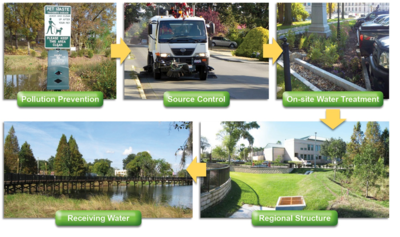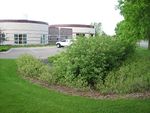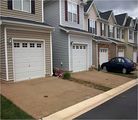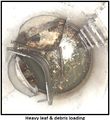
Difference between revisions of "Structural stormwater Best Management Practices"
m |
m |
||
| Line 36: | Line 36: | ||
File: Preserver Photo 1.JPG|alt=image of Preserver pretreatment device|Pretreatment Manhole Sump [Ramsey Conservation District, 2017]. | File: Preserver Photo 1.JPG|alt=image of Preserver pretreatment device|Pretreatment Manhole Sump [Ramsey Conservation District, 2017]. | ||
</gallery> | </gallery> | ||
| + | |||
| + | [[Category:Level 2 - Best management practices/Structural practices]] | ||
Latest revision as of 19:11, 8 December 2022
A structural stormwater Best Management Practice (BMP) is defined in the MS4 General permit as "a stationary and permanent BMP that is designed, constructed and operated to prevent or reduce the discharge of pollutants in stormwater".
- Green roofs
- Permeable pavement
- Trees
- Bioretention
- Rain garden: see Bioretention
- Infiltration (infiltration trench, basin, dry well, and underground infiltration)
- Filtration
- Iron enhanced sand filter (Minnesota Filter)
- Stormwater ponds
- Stormwater wetlands
- Manufactured treatment devices
- Pretreatment practices
- Vegetated filter strips
- Pretreatment - Hydrodynamic separation devices
- Pretreatment - Screening and straining devices, including forebays
- Pretreatment - Above ground and below grade storage and settling devices
- Pretreatment - Filtration devices and practices
- Pretreatment - Other pretreatment water quality devices and practices
- Chemical treatment
- Examples of structural BMPs.
This page was last edited on 8 December 2022, at 19:11.







